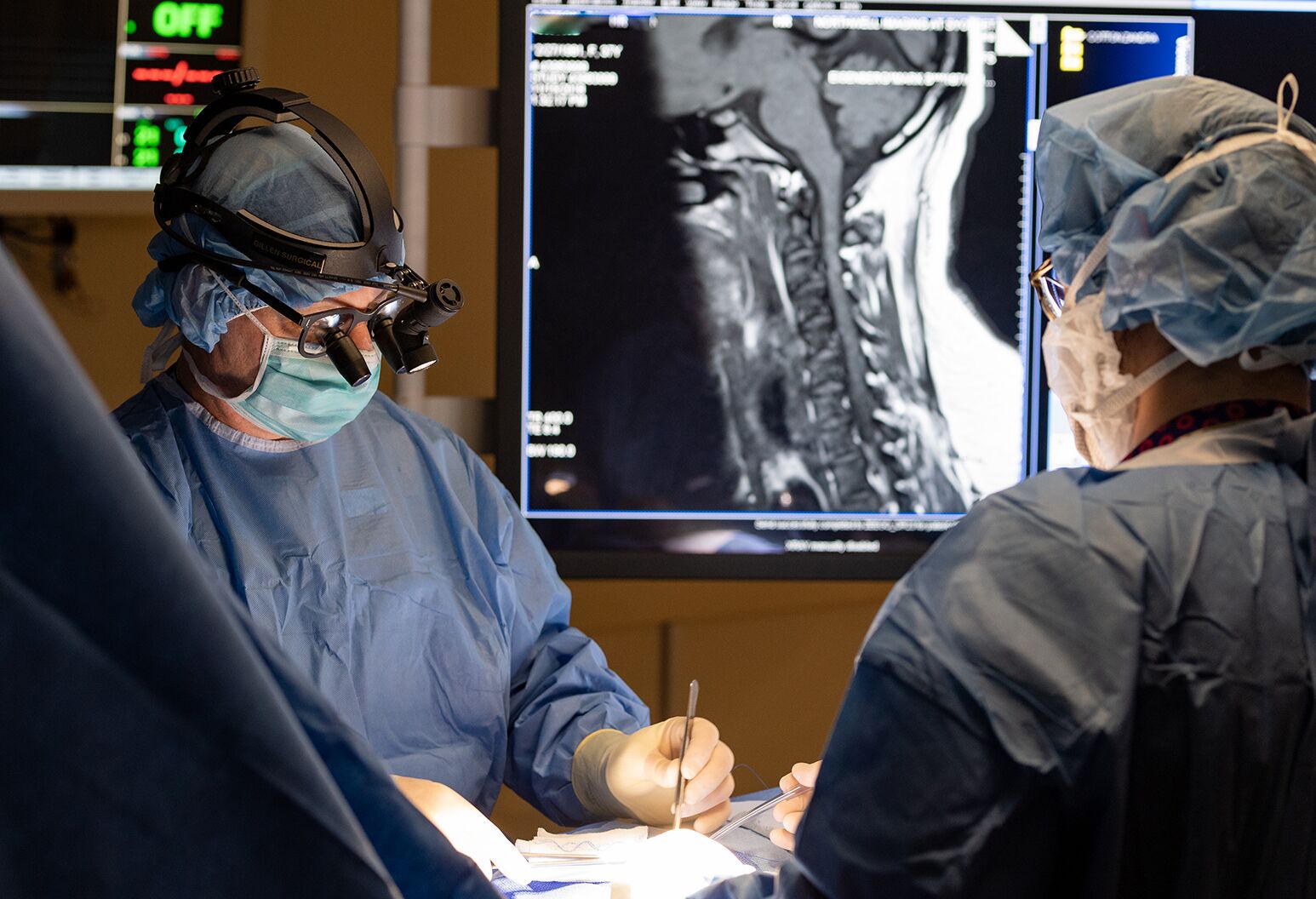Tips for Healing After Surgical Procedure with the Best Spine Surgeons in St Louis MO
Tips for Healing After Surgical Procedure with the Best Spine Surgeons in St Louis MO
Blog Article
An Overview of Back Conditions That Usually Result in Surgical Treatments
When conventional treatments fall short to alleviate persistent signs and symptoms,Spinal column conditions such as herniated discs, spine stenosis, and degenerative disc illness often necessitate medical treatments. These problems not just cause substantial pain yet can likewise drastically harm day-to-day performance and general lifestyle. Recognizing the subtleties of each problem and the matching surgical options, such as discectomy or spinal blend, is crucial for effective management. As we check out these problems further, it becomes apparent that the decision-making process surrounding surgical treatment is complex and warrants mindful factor to consider.
Herniated Discs
Although many people with herniated discs might find alleviation via conventional treatments, surgery becomes a needed factor to consider when symptoms linger or worsen - best spine surgeons in st louis mo. A herniated disc happens when the soft inner gel of a spine disc protrudes through its external layer, potentially leading and pressing nearby nerves to pain, pins and needles, or weak point in the extremities
Conservative administration normally includes physical therapy, discomfort medicines, and corticosteroid injections, which intend to lower inflammation and enhance feature. However, in cases where these techniques fall short to minimize devastating signs, medical alternatives may be checked out.
One of the most common surgery for herniated discs is a discectomy, which involves the removal of the herniated section of the disc to relieve pressure on the influenced nerve root. In much more serious situations, spine blend might be necessary to stabilize the impacted vertebrae.
Individuals are suggested to discuss the potential risks and advantages of surgical procedure with their health care service provider to make an informed decision. Eventually, the objective of any type of surgical intervention is to restore function, reduce discomfort, and enhance general lifestyle for individuals dealing with herniated discs.
Spinal Stenosis
Spinal constriction takes place when the rooms within the spinal column narrow, resulting in enhanced pressure on the spine and nerves. This problem can create in different regions of the spinal column, consisting of the cervical and back locations, usually due to age-related adjustments, such as degenerative disc condition, joint inflammation, or thickening of ligaments.
Individuals with spine constriction might offer with symptoms that include discomfort, tingling, prickling, or weak point, primarily in the legs or arms. These symptoms can be worsened by tasks that include standing or walking, frequently leading people to look for relief through conservative treatments like physical treatment, drugs, or epidural steroid shots.
However, when these non-surgical treatments fall short to offer appropriate alleviation, surgical choices might be considered. Common surgical treatments for back constriction consist of laminectomy, which involves the removal of part of the vertebra to relieve pressure, and spine blend, which stabilizes the afflicted location.
Spondylolisthesis
Spondylolisthesis occurs when one vertebra slips ahead over another, resulting in misalignment of the spine. This condition can arise from numerous factors, including hereditary flaws, injury, or degenerative get more changes in the spine. It is most typically observed in the lumbar region, especially at the L4-L5 and L5-S1 degrees.

When non-surgical methods stop working to relieve signs and symptoms or when substantial nerve compression is existing, surgical intervention may be required. Surgical alternatives can include back fusion or decompression treatments, aimed at bring back placement and easing neurological signs.
Degenerative Disc Disease

Individuals with DDD often experience pain that may emit to the arms or legs, relying on the influenced area of the back. The problem can be diagnosed through a combination of medical assessment, imaging research studies, and individual background. Treatment choices normally start with traditional actions, consisting of physical treatment, discomfort monitoring, and way of living alterations. However, when these approaches fail to provide adequate relief, surgical Click Here interventions might be taken into consideration.
Surgical alternatives for DDD may consist of spine fusion or man-made disc replacement, targeted at stabilizing the influenced segment and relieving pain (best spine surgeons in st louis mo). Ultimately, the option of treatment is individualized, thinking about the intensity of the condition, individual health, and way of life factors
Spine Tumors

Back lumps can emerge from numerous variables, consisting of hereditary tendency, environmental influences, and pre-existing medical problems. People might provide with an array of signs, including localized discomfort, neurological deficiencies, weak point, or modifications in bowel and bladder function, depending on the tumor's dimension and area.
Medical diagnosis commonly entails imaging researches such as MRI or CT checks, which assist define the tumor's characteristics and effect on bordering structures. In evaluating treatment options, the lump's kind, quality, and location are crucial factors to consider. Surgical treatment may be warranted to relieve signs, obtain a biopsy, or get rid of the growth entirely. The objective of surgical treatment is frequently to unwind neural components and support the spine. Adjuvant treatments, including radiation or chemotherapy, might likewise be necessary relying on the growth's nature. Early detection and treatment are vital for enhancing outcomes in people with spinal lumps.
Final Thought
In recap, back conditions such as herniated discs, spine constriction, spondylolisthesis, degenerative disc condition, and spinal growths often demand medical intervention because of their prospective to create significant pain and practical disability. While traditional therapies might offer momentary alleviation, medical alternatives become vital when signs and symptoms linger or Visit Website worsen. Prompt medical diagnosis and treatment play an essential function in recovering feature and improving the top quality of life for damaged individuals, highlighting the relevance of comprehensive spinal care.

Report this page